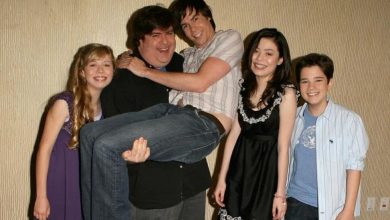‘Giselle’: Remaking (and Updating) a Classic and Finding a Hit

LONDON — It’s a throw of the dice. Ballet audiences love full-length narrative works, but unlike opera, enduring story ballets don’t make for a long list. Ballet directors need more of them but tremble at the investment of money and time they require, knowing that the chances of long-term success, both financial and critical, aren’t great.
When Tamara Rojo, the director of English National Ballet, asked Akram Khan to create a new version of the much-loved 19th-century classic “Giselle,” the wager had particularly high stakes. Rojo, a Spanish-born ballerina, was only two years into her job as English National Ballet’s artistic director and was trying to establish an identity for the troupe that would differentiate it from the larger, better-funded Royal Ballet, where she had been a principal dancer. Khan, a British dance maker of Bangladeshi origin, who had risen to fame in Britain with a melding of classical Indian kathak and contemporary dance, had little interest in ballet and had never created a full-length work.
“There was about one in a million odds that this would work,” Khan said.
But it did. “Giselle,” which opens at the Brooklyn Academy of Music on Wednesday (and runs through Saturday), was an immediate hit when English National Ballet performed it at the Manchester International Festival in 2016. In Khan’s version, Giselle is one of the migrant workers who have set up camp behind the high walls of a shuttered garment factory where they’d worked. Albrecht is a wealthy owner of the factory who pretends to be a migrant; the requisite deception, betrayal and death ensue. (The wilis — spirits of dead women, jilted before they reached the altar — remain the wilis, although with more horror movie overtones.)
In a phone interview, David Binder, the artistic director of the BAM, said, “Akram transforms the work into something totally new, which still speaks to our time and to the original, a bit like the recent production we had of ‘Cyrano.’”
He added: “If you are coming with expectations about a traditional ‘Giselle,’ you’ll have a fantastic evening; if you don’t know ‘Giselle’ at all, you will have a fantastic evening.”
Since its premiere, the piece — with a score by Vincenzo Lamagna and design by Tim Yip — has traveled internationally, establishing the company as a nimble vehicle for adventurous contemporary ballet, and cementing Rojo’s reputation for risk-taking vision and drive. (At the end of the year, she will succeed Helgi Tomasson as artistic director of the San Francisco Ballet.)
Rojo, 48, will dance the role of Giselle twice at the Brooklyn Academy — one of the last times she will perform, before bowing out in October with a final “Giselle” in Paris.
In a video call, Rojo and Khan discussed why “Giselle” was a particularly relevant work for English National Ballet, the pain of pointe work and the impact of the ballet on their careers. Here are edited excerpts from the conversation.
Why a reworking of “Giselle,” one of the few 19th-century ballets that still feels perfect?
TAMARA ROJO “Giselle” is a ballet with special relevance to English National Ballet, because the company was founded, in 1950, by Alicia Markova and Anton Dolin, who were famous for their partnership in that work.
I had seen the Björk film, “Dancer in the Dark,” and felt like it was the story of Giselle in a contemporary context. Akram’s first piece for the company, “Dust,” was transformative for us, and I knew he had an amazing capacity for narrative, and an abstract, spiritual side. I genuinely thought he was the choreographer who could do it.
Akram, you said that you had seen very little ballet at that point. How did you approach “Giselle”?
AKRAM KHAN It’s not just about entering a world — it’s who holds your hand, and Tamara did that. She would explain to me, like an embodied tourist guide, all the details of the story. It became clear to me that the second half was my entry point, perhaps because I invest a lot of curiosity in the intangible things we can’t speak about, whereas the body can. But I didn’t know what to do about the pointe shoes.
Then Tamara explained the history of pointe work to me, and I realized it had made spirits and ghosts more believable onstage. That was probably the most exciting part of the process for me. I was totally naïve — I had no idea it was so hard, torturous really, to be on pointe all the time, and I would keep the women on their toes while I thought about things. When someone started crying, Tamara had to explain to me. I still feel bad.
In your “Giselle,” the original villagers become migrant workers. Did you want to make a political point?
KHAN The migrant crisis was huge for me. I remember being in a pub and seeing television footage of that little boy washed up the shore of a Greek island. In fact, the migrant crisis was just beginning; look at what’s happening with Ukraine now. In both the original version of “Giselle,” and this one, it’s the tension between the powerful and the powerless that drives the narrative.
What impact did the success of the ballet have on your careers?
ROJO For English National Ballet, it was transformative. There are sometimes works that become inevitably associated with one company, like Pina Bausch’s “Rite of Spring” and the Tanztheater Wuppertal. “Giselle” helped me define the identity of the company, and what I believed it could be.
When I announced I was commissioning Akram to do “Giselle,” I got a lot of criticism from the ballet world; that I would ruin the dancers’s technique, that I wasn’t interested in classical dance. But afterward, people understood that it widened their vocabulary, their strength, their knowledge. And the ballet’s success gave me the trust of my board and supporters, and the energy and strength to continue on a path of risk.
KHAN Working with English National Ballet reminded me of the importance of structure, of discipline, of technique. I felt the dancers’ history, the beauty and power of the corps de ballet. There is something very powerful about that idea of being one entity, dedicated to a common purpose.
I feel we have lost that a bit in contemporary dance, at least in Europe. New voices and talent are important, but we need the respect for knowledge, wisdom and tradition. If you want to know who and where you are, you have to look at the past.
Story ballets seem more popular than ever. Why do you think that is?
ROJO Telling each other stories is how we create society, recognize each other, learn life and moral lessons. Dance has the great advantage of being a language anybody can understand, and movement can say things that words cannot.
Of course there are fashions; at the moment we have a wave of new narrative ballets, and perhaps a wave of abstract ballets will follow. But humans find meaning in everything, and I don’t think telling stories in dance will go away.





